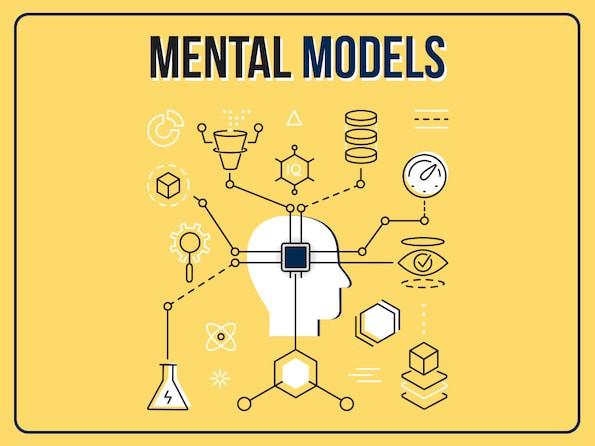Introduction: Why the Recruiter Screen Is the Most Underrated Round in ML Hiring
Every machine learning engineer knows the anxiety of a technical interview, whiteboards, coding platforms, and system design sessions that push your limits. Yet, the majority overlook the first and most decisive round of all: the recruiter screen.
At companies like Google, Meta, and Anthropic, the recruiter screen isn’t just a friendly “get-to-know-you” chat. It’s the filter that determines who even enters the real interview pipeline. In fact, data from top-tier ML hiring teams shows that nearly 70–80% of applicants are rejected at this stage, not for lack of skill, but for lack of clarity, communication, or preparation.
Recruiters aren’t assessing your ability to fine-tune a transformer model or implement backpropagation from scratch. They’re evaluating how you tell your story. They want to see if you can connect your work to business outcomes, express confidence without arrogance, and demonstrate that you’re aligned with both the company’s mission and the specific ML role.
In other words, the recruiter screen is a communication interview disguised as a logistics call.
The irony? Most engineers underestimate it completely.
They treat it as small talk. They ramble through their experience. They fail to highlight measurable impact.
And in doing so, they lose their chance at ever reaching the technical rounds they’ve spent months preparing for.
A strong recruiter screen, on the other hand, does more than get you through, it positions you. It establishes a narrative that follows you through the process, framing how every subsequent interviewer perceives your experience and potential.
At InterviewNode, we’ve seen candidates transform their trajectories simply by mastering this round. With structured storytelling, calibrated confidence, and thoughtful preparation, they not only cleared recruiter calls but influenced their interview paths, sometimes even getting fast-tracked to senior-level panels.
This blog will break down exactly what recruiters are looking for, what hidden metrics they score you on, and how to turn this often-overlooked conversation into your competitive advantage.
Because in ML hiring, the recruiter screen isn’t the warm-up.
It’s the first test of clarity, confidence, and credibility.
Section 1: What the Recruiter Screen Really Tests
The recruiter screen isn’t a warm-up, it’s a strategic filtering round designed to identify candidates who are both qualified and communicative. It might feel casual, but recruiters are quietly scoring you across multiple dimensions that go far beyond your résumé.
They’re not checking whether you can optimize gradient descent or build a feature pipeline from scratch, they’re assessing whether you can communicate complex technical work clearly, confidently, and concisely.
a. Clarity and Focus
Your recruiter might not have a PhD in machine learning, but they’re experts at spotting confusion.
They listen for clarity, do you describe your projects and role crisply, or do you lose focus mid-sentence?
For instance, saying:
“I worked on improving model latency by 40% using feature pruning and distillation techniques, which reduced compute costs by 25%.”
is far stronger than:
“I did some optimizations in the model and it performed faster.”
The former demonstrates precision, business impact, and confidence, three green flags recruiters love.
b. Narrative and Motivation
Recruiters assess whether your career story makes sense. They look for logical progressions: learning paths, intentional transitions, and alignment with ML goals.
A strong candidate ties their journey together, showing growth and curiosity.
For example:
“I transitioned from backend engineering to ML after realizing how much impact data-driven systems had on user experience. Since then, I’ve focused on model deployment and inference optimization.”
This shows direction, not drifting.
c. Communication Confidence
Recruiters are constantly evaluating tone. Do you sound engaged, confident, and collaborative?
Confidence isn’t about volume, it’s about clarity. The goal is to project credibility without arrogance.
Even simple behaviors, smiling while talking, pausing thoughtfully, avoiding filler words, convey a sense of maturity and presence that builds trust quickly.
d. Recruiter’s Hidden Goal
Every recruiter’s unspoken task is to de-risk the candidate.
They’re asking themselves:
- “Can this person represent the company professionally?”
- “Will they communicate well with technical teams?”
- “Do they sound prepared and aligned?”
If the answer is yes, you’re through to the next round. If not, even the strongest résumé can’t save you.
As noted in Interview Node’s guide “Soft Skills Matter: Ace 2025 Interviews with Human Touch”, technical excellence opens the door, but communication excellence keeps it open.
Section 2: Why ML Recruiter Screens Are Different
A recruiter screen for a machine learning role isn’t like the one for a general software engineering position. It’s trickier, more nuanced, and subtly tests whether you can bridge technical expertise with strategic understanding.
Most ML recruiter screens sit at the intersection of depth and clarity. The recruiter isn’t trying to trip you up, they’re ensuring you can translate ML complexity into practical value that aligns with the company’s needs.
a. Recruiters Know Enough to Test Your Understanding
While recruiters aren’t data scientists, they’re trained to recognize whether a candidate truly understands what they’re talking about. They’ve spoken to hundreds of ML engineers, data scientists, and research leads, they know how real impact sounds.
If you describe your projects only with buzzwords (“transformers,” “diffusion models,” “Llama 3 fine-tuning”) without context, they’ll flag you as superficial.
Instead, tie your technical terms to business results:
“We fine-tuned Llama 2 on domain-specific data to improve customer query accuracy by 18%.”
That’s results-oriented clarity, and it’s how you pass the recruiter screen in ML.
b. They’re Evaluating Role Alignment, Not Expertise
For ML roles, recruiters want to confirm that your background matches the job’s technical weight. They’ll listen for whether you’re a better fit for:
- ML Engineer: Focused on model deployment, pipelines, infrastructure.
- Data Scientist: Analytical insights and experimentation.
- Applied Scientist: Research-prototype balance.
The candidate who can confidently explain where they fit earns instant credibility.
For example:
“My strength lies in productionizing ML models, I bridge research prototypes into scalable APIs.”
Recruiters hear that and immediately think: “This person knows their lane.”
c. The “Communication + Context” Formula
In ML recruiter screens, content is secondary, context is king.
If you can explain why you chose a method or how it impacted users, you’ve already differentiated yourself. Recruiters remember candidates who make complex systems sound purposeful.
d. The Hidden Filter: Business Awareness
The final secret? Recruiters score how well you connect your ML work to the company’s broader mission.
You might be building embeddings or optimizing model latency, but do you understand why it matters to the product, users, or brand?
That’s the unspoken test most fail.
As highlighted in Interview Node’s guide “ML Engineer vs AI Engineer vs Data Scientist: Roles & Salaries”, knowing how to position your expertise, not just demonstrate it, is what separates clear communicators from overqualified rejects.
Section 3: The Hidden Scoring Rubric
Recruiter screens might seem conversational, but behind every “tell me about yourself” or “why are you interested in this role?” lies a scoring framework, a structured way for recruiters to evaluate whether you should move forward.
At top-tier companies like Google, OpenAI, or Meta, recruiters use internal rubrics to measure your clarity, confidence, and alignment, three pillars that determine whether you advance to the technical rounds.
a. Clarity: How Well You Explain Your Experience
The first hidden metric is clarity. Recruiters want to see if you can explain complex ML work in plain English.
If you sound overly academic or disorganized, they assume you’ll struggle in cross-functional settings later on.
To score high here:
- Keep your explanations structured: problem → approach → impact.
- Avoid long tangents or jargon without context.
- Summarize key results concisely.
For example:
“We built a multi-class classifier to detect fraudulent activity, which reduced false positives by 30% and saved $1.2M annually.”
That’s simple, crisp, and impactful, exactly what recruiters want.
b. Confidence: How You Sound, Not Just What You Say
Confidence isn’t about speaking loudly or fast, it’s about composure and conviction. Recruiters listen for tone and pacing more than content.
Do you pause intentionally? Do you speak with purpose? Do you sound like someone who owns their achievements?
If you use uncertain language like “I think,” “maybe,” or “sort of,” you sound unsure. Replace that with assertive phrasing:
“I led a cross-functional team to productionize a model in under six weeks.”
Confidence = credibility.
c. Alignment: Do You Fit the Role’s DNA?
Recruiters want to know if your goals align with the company’s.
That means researching the company’s ML stack, values, and culture.
If you can naturally reference these, “I saw that Meta’s Llama models are shifting toward efficient deployment, which aligns with my work in model optimization”, you’ve hit the bullseye.
They’re not testing memorization; they’re testing whether you’ve done your homework.
d. The Bonus Category: Storytelling Coherence
Finally, there’s one metric that most candidates never suspect: story flow. Recruiters subconsciously evaluate whether your career narrative feels cohesive or random.
If you’ve moved from data science to backend, then to ML engineering, they want to understand why. Was it curiosity? Growth? Product interest? Or were you just chasing trends?
The way you connect those dots tells recruiters a lot about your decision-making style and professional maturity.
Here’s a strong example:
“I began in backend development, but I realized many system bottlenecks came from inefficient data handling. That curiosity led me to ML, where I now focus on optimizing inference pipelines to improve latency and cost.”
This answer converts a potentially confusing career path into a coherent story of evolution and purpose.
e. The “X-Factor” Recruiters Talk About
In many FAANG and top-tier ML recruiting panels, there’s an unwritten column on every evaluation form: the X-factor. It’s that intangible mix of energy, clarity, and self-awareness that makes a recruiter think,
“This person will represent us well in front of a hiring manager.”
You can’t fake it, but you can project it, through calm tone, thoughtful phrasing, and genuine enthusiasm for the field.
When recruiters finish the call and describe you as “engaged, confident, and articulate,” you’ve already passed. The rest of the process becomes a formality.
f. Why This Rubric Matters More Than You Think
A recruiter’s screen summary often becomes your first impression dossier, the note that hiring managers read before they ever meet you.
If that summary says:
“Strong communicator, structured storyteller, clear on goals,”
your interview loop starts with momentum.
But if it reads:
“Vague, overly technical, unsure of focus,”
you’re fighting an uphill battle before round two even begins.
That’s why the recruiter screen isn’t “just HR.” It’s your audition for the next five conversations.
As revealed in Interview Node’s guide “Behind the Scenes: How FAANG Interviewers Are Trained to Evaluate Candidates”, even the first five minutes of this call can set the tone for your entire interview lifecycle.
Section 4: How to Prepare Strategically
Preparing for the recruiter screen is not about memorizing answers, it’s about crafting a strategic narrative that sells your skills, clarifies your goals, and builds immediate trust.
Top ML engineers who consistently clear this round do so because they plan their communication as deliberately as they design their models.
Here’s how to do it right.
a. Build a 90-Second Elevator Pitch
Every recruiter screen starts with some variation of:
“Tell me about yourself.”
Most candidates ramble here, giving a chronological résumé summary. Instead, deliver a crisp, impact-driven story that makes them remember you.
Structure it like this:
- Who you are: “I’m an ML engineer with 4 years of experience deploying large-scale models in production.”
- What you’ve done: “At Amazon, I optimized model latency by 35% through quantization and feature pruning.”
- Where you’re headed: “I’m now focused on scalable inference and LLM optimization, which aligns well with your ML infrastructure team.”
That’s short, structured, and recruiter-friendly.
b. Master the “Highlight Reel” of 2–3 Projects
Recruiters don’t want to hear about every project, they want the highlights.
Pick 2–3 projects that best showcase your impact and evolution.
Frame them using this formula:
Challenge → Solution → Result.
Example:
“Our NLP model was too slow for real-time queries. I redesigned the embedding structure and deployed a transformer variant, improving response time by 40% and reducing compute costs by 20%.”
That’s memorable, and measurable.
c. Anticipate Key Questions
Recruiters almost always ask:
- “Why are you looking to move?”
- “Why this company?”
- “What kind of ML work excites you most?”
These aren’t filler questions, they test motivation and alignment.
Prepare thoughtful answers that connect your goals with the company’s mission.
“I’m drawn to OpenAI’s focus on safe deployment because I’ve been working on fairness in NLP systems.”
Alignment signals fit.
d. Rehearse, Don’t Script
Practice your answers out loud, ideally in front of someone who can give feedback.
But don’t memorize, you’ll sound robotic.
The best candidates sound prepared, not programmed.
Think of it as a conversation with structure, not a performance.
As explained in Interview Node’s guide “Quantifying Impact: How to Talk About Results in ML Interviews Like a Pro”, numbers, clarity, and confidence are your best allies, even before the technical rounds begin.
Section 5: The 5 Common Mistakes Engineers Make
Even the most technically gifted ML engineers stumble in recruiter screens, not because they lack expertise, but because they misread the purpose of the round.
Recruiters aren’t grading your model knowledge; they’re evaluating how you represent your impact, confidence, and fit.
Here are the five mistakes that quietly derail even top-tier candidates.
a. Treating It Like a Casual Chat
Too many engineers assume the recruiter screen is informal.
They show up unprepared, multitask during the call, or answer with vague, unstructured responses.
Big mistake.
Recruiters write detailed notes that go directly to hiring managers. If you treat the call lightly, it signals disinterest or poor communication skills.
Fix: Approach this round with the same seriousness you’d give a coding interview. Dress well, speak clearly, and treat it like a pitch, not a coffee chat.
b. Diving Too Deep into Technicals
A recruiter’s job isn’t to debug your model pipeline. Overwhelming them with dense jargon is the fastest way to lose engagement.
If you say:
“I optimized the backpropagation step using mixed-precision training with fused kernels on CUDA tensors,”
you’ll likely lose them.
Instead, simplify the takeaway:
“I reduced training time by 40% using GPU optimization techniques.”
Same impact, better clarity.
c. Underselling Achievements
Many engineers speak modestly about their results, using phrases like “I helped with” or “I supported.”
Recruiters are scanning for ownership and impact.
Say:
“I led the effort to deploy the model to production, improving accuracy by 7%.”
not
“I helped deploy the model.”
Confidence attracts interest.
d. Sounding Rehearsed
While structure matters, sounding scripted kills authenticity. Recruiters value candidates who can think aloud naturally and adapt dynamically.
Fix: Rehearse your stories but vary the delivery each time you practice. It keeps your tone conversational.
e. Ignoring Recruiter Signals
Recruiters often drop subtle cues about what the hiring team values, such as “the team is focused on scalable ML infrastructure” or “they’re building a new recommendation platform.”
Missing or ignoring those cues is a lost opportunity to show alignment.
Respond with curiosity:
“That’s exciting, I’ve been scaling models for similar latency challenges.”
Now, you’re not just answering; you’re connecting.
As reminded us in Interview Node’s guide “Why Software Engineers Keep Failing FAANG Interviews”, most failures stem not from lack of skill, but from lack of awareness. The recruiter screen is your chance to show you have both.
Section 6: Turning the Screen into a Strategy Session
Most candidates think of the recruiter screen as a one-sided evaluation, but the best ML engineers treat it as a strategic dialogue.
Instead of simply answering questions, they use this round to shape the narrative that will follow them through the entire hiring process.
You’re not just there to “pass.” You’re there to position yourself.
a. Redefine the Goal: From Screening to Storytelling
Your objective in this round isn’t to prove technical mastery, it’s to establish positioning and perception.
Recruiters are the narrators of your story to hiring managers.
If you feed them the right story, one built on clarity, focus, and impact, they’ll advocate for you internally.
After all, a recruiter who writes,
“Great communicator, impactful ML experience, well-aligned with team mission,”
isn’t just passing you, they’re selling you.
b. Lead the Conversation with Questions
Smart candidates subtly shift recruiter calls into two-way conversations.
They ask strategic questions that demonstrate curiosity, awareness, and alignment.
Examples:
- “How does this team measure ML success, is it more about model accuracy or production efficiency?”
- “Is the company exploring LLM integration or focusing on optimization of existing pipelines?”
Questions like these do two things:
- They make you sound like a collaborator, not an applicant.
- They give you valuable intel for upcoming technical rounds.
c. Highlight Transferable Impact
Use the recruiter screen to connect your work to business outcomes.
Instead of describing what you built, explain what it changed.
Example:
“Our feature engineering optimization improved ad ranking, leading to a 10% increase in CTR and better user retention.”
Recruiters remember measurable impact far more than deep technical descriptions.
d. Close Strong, and Set Up the Next Step
End the call with energy and intent. Say something like:
“This sounds like an incredible fit, I’m particularly excited about the scale of your ML infrastructure. What are the next steps?”
This shows enthusiasm, professionalism, and proactivity, all traits recruiters score highly.
As explained in Interview Node’s guide “From Interview to Offer: InterviewNode's Path to ML Success”, every interaction in the hiring process is a negotiation of narrative. The recruiter screen is your first, and most controllable, one.
Section 7: The Recruiter’s Perspective
To ace the recruiter screen, you must understand how the recruiter is trained to think.
They’re not data scientists or ML engineers, but they’re pattern detectors. Their role is to find clarity, confidence, and alignment among hundreds of candidates who all sound technically similar.
The recruiter screen isn’t just a conversation, it’s an evaluation of how you make them feel about recommending you to the hiring team.
a. Recruiters Want Signal, Not Detail
Recruiters are listening for structured communication, not algorithmic complexity. They evaluate whether your story has a clean signal:
- Who you are
- What you’ve accomplished
- Why you’re relevant to this team
If your answers are cluttered with dense technicalities, “I implemented a hybrid transformer architecture using quantized embeddings on Tensor Cores”, you lose them.
They’ll note: “Strong tech depth, weak clarity.”
Instead, translate technical work into measurable outcomes:
“I optimized model inference for real-time use, cutting latency by 30%.”
They’ll write: “Impactful, clear communicator.”
That’s the difference between moving forward and being filtered out.
b. Recruiters Evaluate Energy and Presence
Recruiters listen to tone as much as content.
They ask:
- Does this person sound genuinely interested?
- Would they represent us well in later rounds?
- Are they confident without being arrogant?
Even subtle behaviors, pausing thoughtfully, smiling as you speak, keeping your tone upbeat, help project composure and professionalism. Recruiters consistently describe strong candidates as “engaged and self-aware.”
c. Recruiters Remember How You Made Them Feel
Most recruiter notes are emotional summaries disguised as factual feedback:
- “Seems like a great communicator.”
- “Not sure they’re confident enough.”
- “Came off as scattered.”
The secret? Your tone, not your words, shapes these impressions.
That’s why active listening, structured phrasing, and steady pacing make you stand out.
d. Recruiters Love Prepared Curiosity
When you ask intelligent questions about the company’s ML strategy or team mission, recruiters see you as engaged and informed.
It signals you’ve done your homework, and that you’re not just applying everywhere.
Even a simple question like:
“How does this team balance experimentation with production readiness?”
shows that you’re thinking like an insider.
As explained in Interview Node’s guide “Behind the Scenes: How FAANG Interviewers Are Trained to Evaluate Candidates”, recruiter screens aren’t about knowledge gaps, they’re about confidence calibration. Recruiters promote candidates who sound like future colleagues, not just applicants.
Section 8: Conclusion, The Most Overlooked Step to ML Interview Success
The recruiter screen isn’t just a checkpoint, it’s a first impression that echoes through the entire hiring pipeline.
Before you meet a hiring manager or write a single line of code, your recruiter has already shaped how the company perceives you.
That one conversation often decides whether you’re seen as a promising candidate or another résumé in the stack.
Why This Round Matters So Much
At FAANG and top AI companies, the recruiter’s write-up becomes the narrative blueprint for your entire interview process. Every interviewer, from the technical screener to the director, sees your recruiter’s notes.
If that note says:
“Strong communicator, great alignment with company values, confident and structured,”
you begin every subsequent round with positive momentum.
But if it reads:
“Unclear answers, low energy, struggled to explain impact,”
you’re already climbing uphill.
That’s why your performance in this “non-technical” round directly impacts how the technical rounds unfold. It sets the tone, the expectations, and the bias (positive or negative) that follows you throughout.
The Recruiter Screen as a Skill
Think of this round as a test of communication design.
You’re not being graded on syntax or system design. You’re being evaluated on how effectively you convey:
- Who you are.
- What you’ve accomplished.
- Why you’re relevant to this team.
The best candidates rehearse their story the same way they rehearse coding challenges.
They polish their pitch, quantify their results, and refine their tone, ensuring their personality complements their technical reputation.
What Great Candidates Do Differently
The strongest ML candidates do three things exceptionally well:
- They speak with purpose. Every sentence has intent, to demonstrate alignment, clarify goals, or highlight results.
- They connect impact to business value. Instead of “I built a model,” they say, “I built a model that reduced fraud losses by 22%.”
- They project curiosity and confidence together. They don’t rush. They listen, reflect, and respond calmly, creating an impression of thoughtful intelligence.
When recruiters describe them later, they use phrases like:
“Feels like a senior engineer, composed and impactful.”
That’s the kind of feedback that gets you fast-tracked.
Reframing the Recruiter Screen: From Filter to Foundation
If you approach this round as a formality, you’ll blend in.
If you approach it as your first leadership moment, you’ll stand out.
Here’s the mindset shift:
You’re not “getting screened.” You’re setting context for the entire process.
You’re framing how your future interviewers will interpret your technical answers.
The recruiter screen is your chance to define your story before others define it for you.
Final Takeaway
Machine learning interviews are complex, but human judgment begins long before model architectures and metrics.
At its core, the recruiter screen tests whether you can connect the dots between data, decisions, and impact.
It’s not about your technical ceiling. It’s about your communication floor.
And the engineers who master that, who treat recruiter calls as strategy sessions, not small talk, dominate hiring loops across FAANG and beyond.
So the next time your phone buzzes with “Recruiter, Google,” don’t think “formality.”
Think:
“This is where my interview starts, and where I take control of the narrative.”
10 Frequently Asked Questions (FAQs)
1. Is the recruiter screen really that important in ML hiring?
Yes, it’s the gatekeeper. If you can’t convey clarity, confidence, and motivation, you may never reach the technical interviews, no matter how skilled you are.
2. What’s the recruiter actually evaluating?
They’re assessing three main things:
- Communication clarity (Can you explain your work simply?)
- Confidence and tone (Do you sound credible?)
- Fit and alignment (Do your goals match the company’s direction?)
3. How long does the recruiter screen usually last?
Typically 20–30 minutes. Most are structured around your background, motivation, and alignment, with light discussion of your technical focus areas.
4. Should I go deep into technical details?
No. Keep explanations high-level and results-oriented. Save technical depth for later rounds. Recruiters care about clarity, not code.
5. How do I make my answers memorable?
Use the C-A-R formula:
- Challenge: The problem you faced.
- Action: What you did.
- Result: The measurable impact.
6. How should I prepare for “Tell me about yourself”?
Practice a concise, 90-second pitch:
- Who you are → What you’ve achieved → Why you’re interested in this company.
Make it personal, confident, and specific.
7. How do I handle compensation questions?
Be professional and data-driven:
“I’m open based on role scope and level, but my current target is in the range of X–Y, aligned with industry benchmarks.”
This signals preparedness and maturity.
8. What should I do if I feel nervous or ramble?
Pause, smile, and reframe. Recruiters appreciate calm self-correction:
“Let me rephrase that briefly, the main takeaway was improving model accuracy under limited data.”
You’ll regain control, and they’ll admire your composure.
9. What’s the best way to follow up?
Send a short thank-you email within 24 hours. Reinforce alignment (“I’m excited about your team’s ML infrastructure direction”) and restate enthusiasm for next steps.
10. Can a great recruiter screen offset weaker technical rounds?
It can help. A strong recruiter impression creates internal advocacy. If you’re on the bubble later, that positive early feedback often influences final decisions.
Final Thought
The recruiter screen isn’t “just HR.”
It’s the first evaluation of how you think, speak, and lead.
When you prepare intentionally, telling your story with purpose, clarity, and measurable impact, you don’t just pass the screen.
You create momentum that carries through every stage that follows.
In 2025, ML hiring isn’t just about your code, it’s about your clarity under conversation.
Master that, and the rest of the process becomes infinitely easier.






